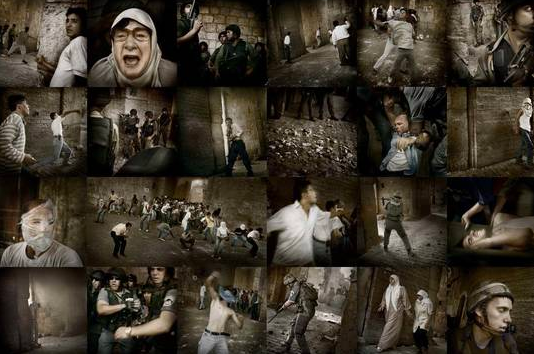Norway – In the ninth consecutive Nobel Peace Prize Exhibition at the Nobel Peace Center in Oslo, Norway, the audience get to experience how the OPCW inspectors monitor, identify and destroy chemical weapons. This year’s photographer is the world renowned Paolo Pellegrin from the photo agency Magnum Photos.
Paolo Pellegrin has followed the inspectors closely in the weeks after it was announced that The Organisation for the Prohibition of Chemical Weapons (OPCW) is awarded the 2013 Nobel Peace Prize. With American war correspondent and writer Scott Anderson’s short texts, Pellegrin’s graphic and strong black and white images provide a rare insight into the daily lives of the weapon inspectors.
 Paolo Pellegrin. © Kathryn Cook
Paolo Pellegrin. © Kathryn Cook
Paolo Pellegrin has had a unique access to document the sometimes hazardous work of the OPCW, and a photographer of his caliber gives this year’s Nobel Peace Prize Exhibition a genuine power, says Bente Erichsen, Executive Director of the Nobel Peace Center. Pellegrin’s images allow the public close access to some of the unsung heroes of the world, and we very much look forward to opening our doors in December.
The images in the exhibition Combating Chemical Weapons are taken in Libya, the Netherlands, Belgium and a country in Eastern Europe, and documents OPCW’s work abolishing chemical weapons of today and from WWI. Very few have been allowed insight into the daily work of the weapon inspectors. In this exhibition, visitors can see and experience some of the hazardous work themselves.
The making of the official Nobel Peace Prize Exhibition is an annual occurrence that spans a mere eight weeks, from the Chair of the Norwegian Nobel Committee announces the new Peace Prize laureate, to the exhibition is opened by the OPCW Director-General at the Nobel Peace Center in Oslo in December.
Combating Chemical Weapons is the ninth Nobel Peace Prize Exhibition in the row.
Exhibition period: 12 December 2013 – 25 November 2014.
 The threat posed by chemical weapons affects peoples and nations throughout the world, as is illustrated by the multinational composition of the OPCW workforce. Among the 17 OPCW inspectors undergoing training at the Serbian facility in mid- November 2013, are citizens from 12 different nations, including China, Russia, Mexico, Mongolia, Sweden, Belgium and Slovakia. Serbia, 2013. © Paolo Pellegrin.
The threat posed by chemical weapons affects peoples and nations throughout the world, as is illustrated by the multinational composition of the OPCW workforce. Among the 17 OPCW inspectors undergoing training at the Serbian facility in mid- November 2013, are citizens from 12 different nations, including China, Russia, Mexico, Mongolia, Sweden, Belgium and Slovakia. Serbia, 2013. © Paolo Pellegrin.








